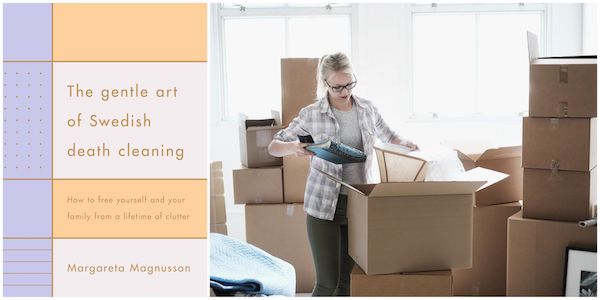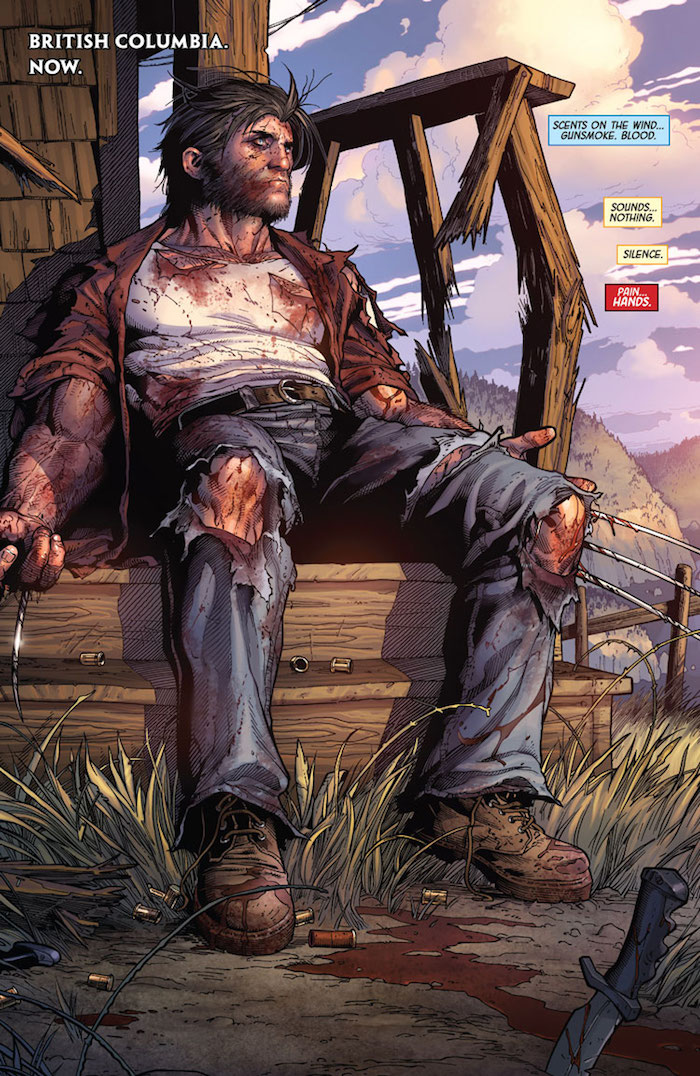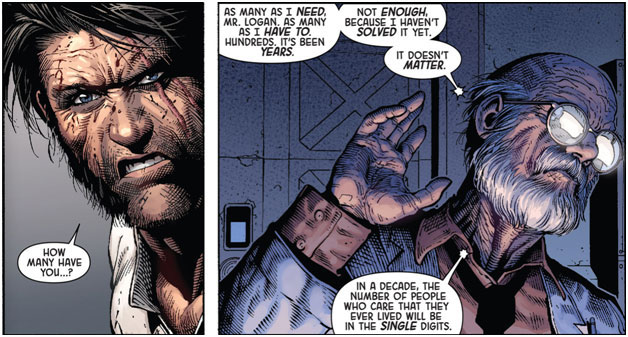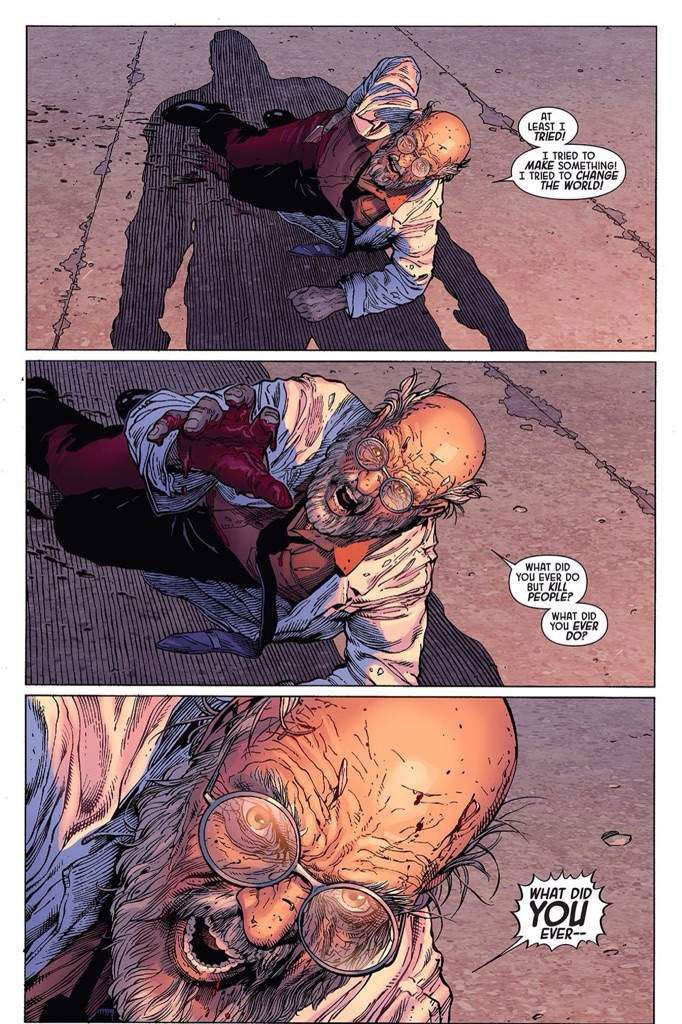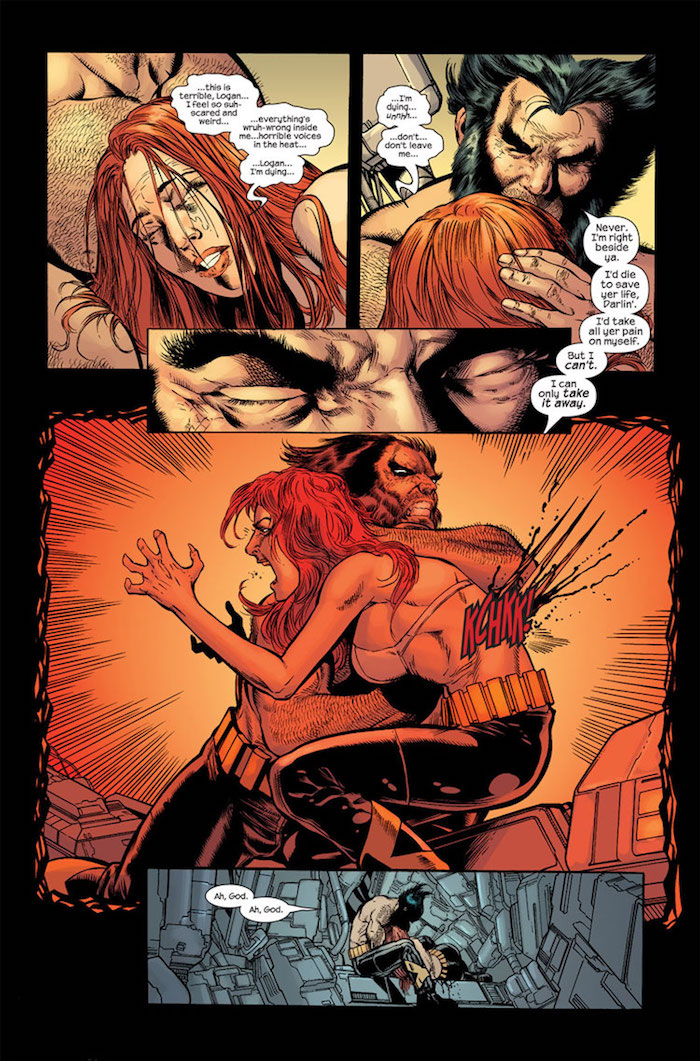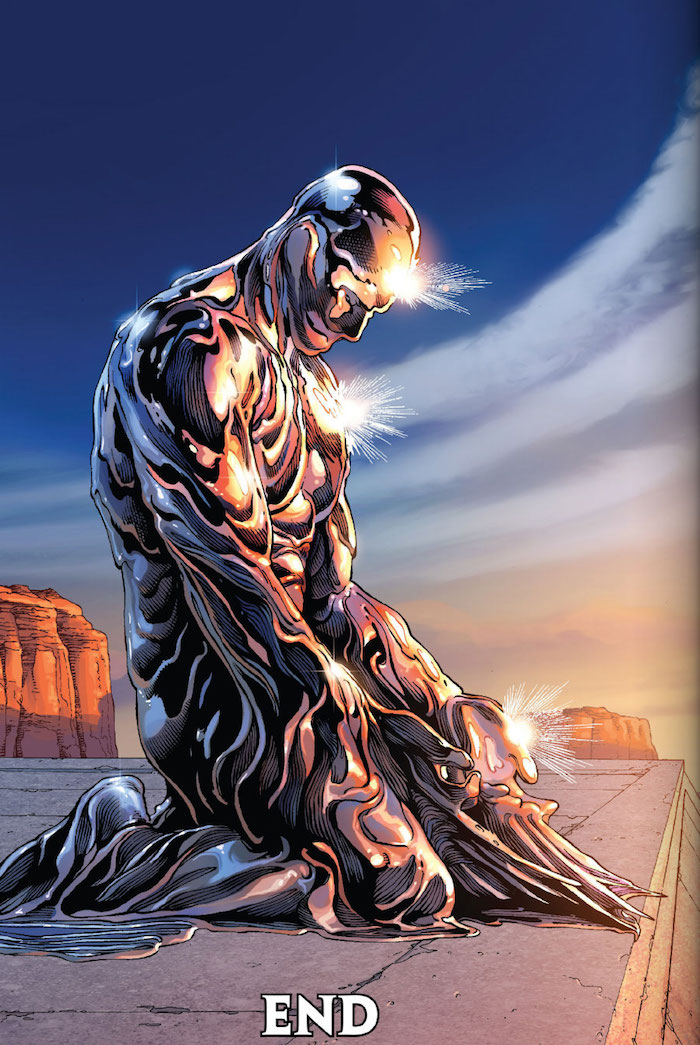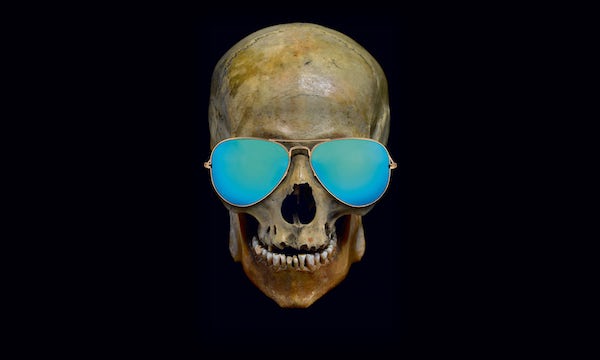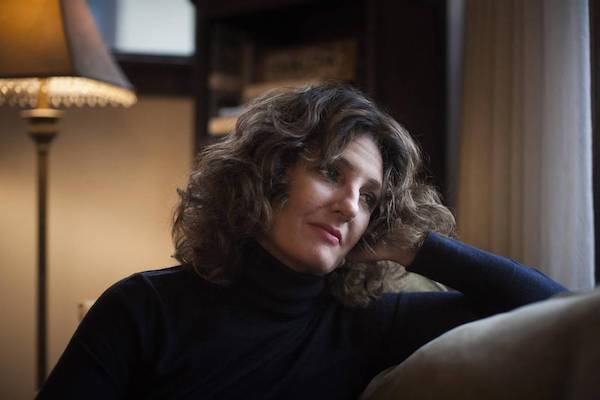Some say we’re forcing children to face issues beyond their years. But films can help make them resilient, self-aware adults
[A]t the weekend Disney Pixar’s new film, Coco, hit cinemas. It topped the UK box office and has already won a Golden Globe, so you can probably guess what it’s about. Princesses, right? Or dinosaurs, maybe.
Nope. It’s death: actual send-the-12-year-old-hero-to the-afterlife-to-meet-his-dead-relatives-type death. Set during the Mexican Día de Muertos (Day of the Dead), when people remember their departed loved ones, its core message is that those we lose live on in our memories. Speaking of memory, there’s also a character with senile dementia. Really kid-friendly stuff.
Children’s films have always had life lessons at their heart. And while most of them have traditionally sat in the positive platitudes category – work hard, be brave, do the right thing – there have been some home truths over the years, too: people are cruel (the Dumbo lesson); you’ll outgrow your childhood and its trappings (thanks, Toy Story 2).
But in recent years, as young people’s lives have become more complex and challenging than ever before, kids’ movies have stepped up, tackling increasingly tricky subjects. If there’s something you’re loth to talk to a child about, chances are there’s a film that will do it for you.
Death is one tough subject that has always been common – even if not quite as central as it is in Coco. Disney’s first heroine, Snow White, was an orphan, and they were soon offing loved ones on screen, starting with Bambi’s mum. In fact, a 2014 British Medical Journal study found that, proportionally, main characters die on screen in more children’s animated films than dramatic films for adults.
By 1994, The Lion King’s Simba was experiencing real grief, and in Toy Story 3 (2010) the heroes slid towards seemingly certain death, hand-in-hand, eyes closed, accepting. But they escaped: death was still a plot point. These days it is the plot.
If you’re thinking life can be as painful as death, modern kids’ films have got that covered too. Take the opening sequence of Pixar’s Up (2009). You know, the one that shows you how dead you are inside by how long you can last without blubbing. It charts every punishing blow of adult life from losing a baby to money troubles to repeatedly putting your dreams on hold.
In the last decade, Disney films have also turned their gaze outwards, championing society’s mistreated and marginalised. Disney’s 2013 megahit Frozen was a feminist triumph, with two kick-ass female leads and a finale centred on sisterhood. It also briefly showed what many believe was Disney’s first same-sex couple, complete with cute kids. And it opened a conversation about parental abuse. Not the overt torture of Disney’s early wicked stepmothers, but a more insidious brand that saw Elsa’s parents shame her for being different.
In 2015, Pixar’s Inside Out tackled what is often the very trickiest subject for children to understand – their own feelings. Set inside the head of a young girl struggling with life, it personified her four key emotions, and concluded that it’s actually totally fine to feel sad, something any child struggling with depression will find deeply reassuring.
And if that wasn’t grown-up enough, 2016 saw Disney release Zootropolis, an anthropomorphic comedy with a hard-hitting message about racial inclusion – highly subversive given the xenophobic political rhetoric that was rife at the time.
Some may say we’re forcing kids to face issues that are beyond their years – that we should go back to the old days where, aside from the odd bereavement, most troubles were solved with a little courage and a singsong. But times have changed, and the way children experience life has changed, too. There are new pressures, new fears, new opportunities, and the chance to mix with people whose identities and choices are, thankfully, being newly embraced by society.
Films are the perfect way for children to understand all this – not only via storylines that they can relate to but in a safe space where they can ask questions freely.
What’s more, the common reference point that films provide means that answering those questions becomes easier for parents, and a more open and honest conversation can develop. Lets face it, most kids won’t even bat an eyelid at the stuff adults worry will shock or confuse them. Kids accept the society we present to them, meaning films that normalise any and every expression of what it means to be human are a key tool in moving us towards a more inclusive society.
But perhaps most importantly of all, films can help kids cope better when life’s struggles hit them for real. They’ve already experienced some of the associated emotions vicariously. They’ve seen how the characters handle the situation. Perhaps they’ve even thought about what they’d do in the same position. If modern kids’ films can help the next generation grow into resilient, self-aware, inclusive adults, I say: keep them coming.
Complete Article ↪HERE↩!
Americans are pack rats. Swedes have the solution: ‘Death cleaning.’
by Jura Koncius
[I]f your family doesn’t want your stuff when you’re alive, they sure won’t want it when you’re dead.
That’s the blunt assessment of yet another self-help author from abroad who is trying to get Americans, who have an addiction to collecting and storage units, to clean up their acts.
The latest volley in the decluttering business comes from Stockholm, where 80-ish artist Margareta Magnusson has just published a slim yet sage volume, “The Gentle Art of Swedish Death Cleaning.” The book will be published in the United States in January.
While Japanese item-control diva Marie Kondo gave us strict instructions to keep only things that spark joy, Magnusson’s book is straightforward and unsentimental (with a bit of humor). The main message from this mother of five is: Take responsibility for your items and don’t leave them as a burden for family and friends. It’s not fair. Magnusson says you can keep things that evoke good memories; there are no hard-and-fast rules such as folding your remaining T-shirts to stand upright in your drawers, as dictated by the KonMari method.
The concept of decluttering before you die, a process called “dostadning,” is part of Swedish culture. (It comes from the Swedish words for death and cleaning.) Karin Olofsdotter, 51, the Swedish ambassador to the United States, says her mother and father, who are in their 80s, are in the midst of it back home.
“My parents and their friends are death cleaning, and we all kind of joke about it,” Olofsdotter says. “It’s almost like a biological thing to do.” Olofsdotter says part of Swedish culture is living independently and never being a burden to anyone. How you keep your home is a statement of that.
Magnusson, who has moved 17 times, says women often end up doing the death cleaning. After her husband died, she had to declutter their house; it took her almost a year before she could downsize to a two-room apartment. She says that although it felt overwhelming, she is glad she did it herself, as her husband would have wanted to keep everything and her kids would have disagreed about what to keep and what to toss. This way, she made her own decisions. Now she continues to do it on a regular basis.
Magnusson suggests that age 65 is a good time to start death cleaning, but the process is freeing at any age.
A few of her tips: Don’t start with your photos, as you’ll get bogged down in your memories and never accomplish anything. Make sure you keep a book of passwords for your heirs. Give away nice things you don’t want as gifts, such as china or table linens or books, as opposed to buying new items. Keep a separate box of things that matter only to you, and label it to be tossed upon your death. It’s okay to keep a beloved stuffed animal or two.
Magnusson and one of her daughters filmed a video in which she talks about why she decluttered and how it’s not a sad process, but more of a relief. Her daughter asks whether her mom would help her begin death cleaning. They go to a storage locker overflowing with luggage and clothes and blankets topped by a garden gnome.
“Oh, my God. What are you going to do with all this crap?” her mother says in perfect English, taking a look around. They discuss how long it’s going to take.
“You are never ready with your death cleaning because you don’t know when you are going to die,” Magnusson says. “So it goes on and on.”
When you are dead, then it stops, they agree.
“Finally,” Magnusson says.
Complete Article ↪HERE↩!
Death: The Greatest Teacher
The Buddha said the greatest of all teachings is impermanence. Its final expression is death. Buddhist teacher Judy Lief explains why our awareness of death is the secret of life. It’s the ultimate twist.
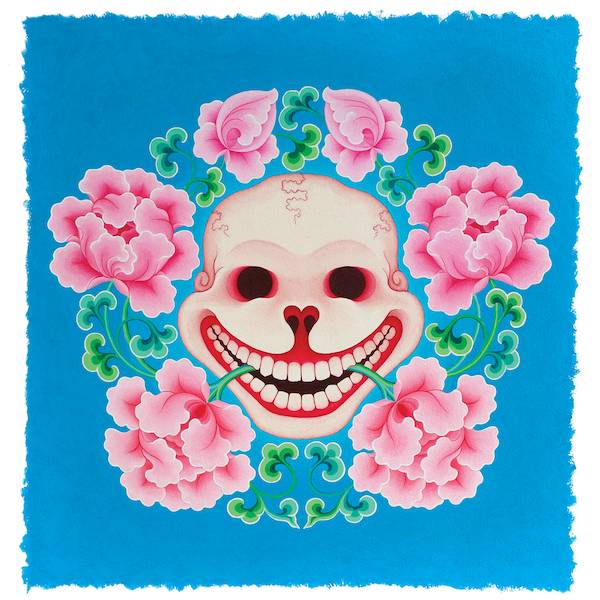
by Judy Lief
[W]hether we fight it, deny it, or accept it, we all have a relationship with death. Some people have few encounters with death as they are growing up, and it becomes personal for them only as they age and funerals begin to outnumber weddings. Others grow up in violent surroundings where sudden death is common, or see a family member die of a fatal illness. Many of us have never seen a person die, while people who work in hospitals and hospices see the realities of death and dying every day. But whether death is something distant for us or we are in the thick of it, it haunts and challenges us.
Death is a strong message, a demanding teacher. In response to death’s message, we could shut down and become more hardened. Or we could open up, and become more free and loving. We could try to avoid its message altogether, but that would take a lot of effort, because death is a persistent teacher.
Teacher death met up with us the minute we were born, and is by our side every moment of our life. What death has to teach us is direct and to the point. It is profound but intimate. Death is a full stop. It interrupts the delusions and habits of thought that entrap us in small-mindedness. It is an affront to ego.
Death is a fact. Our challenge is to figure out how to deal with it, because it is never a good plan to struggle against or deny reality. The more we struggle against death, the more resentment we have and the more we suffer. We take a painful situation and through our struggles add a whole new layer of pain to it.
We cannot avoid death, but we can change how we relate to it. We can take death as a teacher and see what we can learn from it.

Facts are facts: everyone is going to die sooner or later. No magic trick or spiritual gimmick will make it go away. Distancing ourselves from death or putting off thinking about it does not work.
I have noticed that the more distant we are from death, the more fear arises. Death becomes alien, other, scary, mysterious. People who work regularly with the dying, who are closer to death, seem to have less fear.
We each have our own unique relationship with death, our own particular history and circumstances, but one way or another we all relate to death. The question is: how do we relate with this reality and how does this color our lives? It is possible to come to terms with the fact of death in a way that enriches our lives, but to learn from death we must be willing to take a dispassionate look at our experiences and preconceptions.
Reflecting on our own mortality and the reality of death is practiced in many contemplative traditions. In the Buddhist tradition, the contemplation of death is said to be the “supreme contemplation.” It encompasses reflecting not only on physical mortality, but on impermanence in all its dimensions.
By means of meditation and by developing an ongoing awareness of death, we can change our relationship with death and thereby change our relationship with life. We can see that death is not just something that pops up at the end of life, but is inseparably linked with our life moment to moment, from the beginning to the end. We can see that death is not just a final teacher. It is available to teach us here and now.
When we contemplate in this way, our many schemes for getting around the reality of death, such as coming up with interpretations to make it more palatable, are exposed one by one and demolished. Death is the great interrupter, unreasonable and nonnegotiable. No amount of cleverness will make it otherwise.
Contemplating death is not an easy practice. It is not merely conceptual. It stirs things up. It evokes emotions of love, sorrow, fear, and longing. It brings up anger, disappointment, regret, and groundlessness. How tender it is to reflect on the many losses we have experienced and will experience in the future. How poignant it is to reflect on life’s fleeting quality.
How we think about death matters. It affects how we live our life and how we relate to one another.
In this practice, we deliberately bring our attention back again and again to our relationship with death. We examine what we mean by death and what it brings up for us. We reflect on our experiences and reactions to it.
It is a bit like going for marriage counseling. “When did you two first meet? Tell me a little about your history. Do you spend much time together? What is it about him or her that has offended you? How do you see your relationship moving forward?” You could say that death is your most intimate partner. It is with you all the time, completely interwoven into your daily activities. Since that is the case, wouldn’t it be worthwhile to make a relationship with it?
But our relationship with death is not that simple. In order to understand it, we need to slow down and systematically examine our ideas about it, what it brings up for us, and what it means to us. Death stirs up all kinds of thoughts. And hidden within those clouds of thoughts is a small, unspoken, deep-rooted, yet persistent notion—that we will come through it intact, as though we could come to our own funeral.
The more closely you look into all these ideas, the more you see how inadequate the conceptual mind is in the face of death. Nonetheless, how we think about death matters. It affects how we live our life and how we relate to one another.
Contemplative practice challenges us to look deeply into our thoughts and beliefs, our fantasies and presumptions, and our hopes and fears. It challenges us to separate what we have been told from what we ourselves think and experience. We have all kinds of thoughts about what happens when we die and how we and others should relate with death, but through meditation we learn to recognize thoughts as thoughts. We learn not to mistake these thoughts and ideas about death for direct knowledge or experience. We learn not to believe everything we think or everything we have been told.

We are in a dance with death at all levels, and each level influences and is influenced by the others. We are influenced by what we have been told about death and dying, by our personal history, by our cultural biases, and by what we have observed. We are also influenced by inner habits of thought and conditioned responses. Our most subtle views and reactions to impermanence may be quite hidden, but they touch on our view of life altogether, and on our personal identity.
If we want to understand our relationship with death, we need to explore its broader as well as its more subtle dimensions. If we are willing to take an honest look at how we personally deal with this reality, we can develop a deeper understanding of impermanence and even befriend it.
One way to begin is by reflecting on your personal history with death. What have you been told about death? What are some of your earliest experiences of it?
In my case, when I was about five, I was told my babysitter had died, and that was it. For me, she just disappeared, and children did not go to funerals. A bit later, when my aunt died, I was told that she would go to heaven, a very beautiful place. But I didn’t think people really believed that, because all I saw were people upset and crying. When pets died, I was told they “went to sleep.” It didn’t look like sleep to me.
As a child, I observed that dead animals did not breathe or move about like live ones. I saw that they shriveled up and began to smell funny, or were squashed beyond recognition. I saw that dogs hit by cars screamed in pain and that animals looked sick before they died. I saw that people became old and frail. I saw that when you killed a bug, you could not make it come back to life, even if you felt sorry. My friends and I thought it was funny to sing ditties, like “The worms crawl in, the worms crawl out…” Death was not that real to us; we made it into a joke.
I observed many such things on an outer level, but on an inner level, I did not have a clue as to what death was about or what it all meant. I did not know how to make sense of it, or to link it to other experiences in my life.
Death is the texture out of which we grow our identity, the stage on which we enact our story.
In our encounter with mortality, it is this inner dimension, the relationship dimension, that we need to explore. It becomes obvious that to get to a more uncluttered relationship with death, we first need to plow through a surprising number of ideas, presumptions, and speculations, some of which are very deep-rooted. Through this process, we can become aware of the many concepts that are floating around in us, and try to figure out where they come from and what effect they have on us.
When we look into where all this comes from, we encounter a paradox. We usually consider death to be the end, but it begins to seem that death is in fact the beginning. It is the texture out of which we grow our identity, the stage on which we enact our story.
We can begin our exploration right where we are. We have already been born, we are alive, and we have not yet died. Now what? We might connect to our life in terms of a story or a history. For instance, we were born in such and such a time and place, we did this and that, and we have a particular label and identity. But that story is always changing and in process; it is not all that reliable. However, when our story is combined with a physical body, we seem to have something more solid, a complete package. We have something to hang onto and defend. We have something that can be taken away.
But what do we have to hang onto, really? Our story is not that solid. It is always being revised and rewritten. Likewise, our body is not one solid continuous thing. It too is always changing. If you look for the one body that is you, you cannot find it.
The closer you look, the less solid this whole thing seems. When we investigate our actual experience, here and now, moment by moment, we see how fleeting and dynamic it is. As soon as we notice a thought, feeling, or sensation, it has already happened. Poof! It is the same with the act of noticing. Poof! Gone! And the noticer, the one who is noticing, is nowhere to be found. Poof! When we contemplate in this way, we begin to suspect that this life is not all that solid—that we are not all that solid.
This may seem like bad news, but in fact this discovery is of supreme importance. As we begin to see through our mythical solidity, we also begin to notice all sorts of little gaps in our conceptual schemes. We notice little tastes of freedom and ease in which our struggle to be someone dissolves, and we just are. In such moments, at least briefly, we are not being propelled by either hope or fear. We see that continually holding onto life and warding off death as a future threat is not our only option. There is an alternative to our tight-jawed habit of holding on and defending.
After each little insight or pause, there is a regrouping, and we find ourselves reconstructing our world. Each time we put it back together, we are also putting together the threat that it cannot be maintained. We do this over and over again. We are repetitively and continuously fueling the pretense of solidity and the fear of death that comes with it.
To undo this harmful habit, we need to see it more clearly. We need to recognize that we ourselves are responsible for perpetuating it, and therefore we have the power to stop.

In looking at the seeds of our relationship to life and death at a subtle inner level, we uncover how we set ourselves up for a struggle with death from the beginning—at the very personal level of identity and self-definition.
The more solidly we construct ourselves, and the more rigidly we identify with this construct, the more we have to defend and the more we have to fear. Looking at death in terms of such subtle underlying patterns may seem inconsequential, but it is not.
When we drop the battlefield approach—that life and death are enemies—we become open to an entirely new way of viewing things. Instead of this vs. that, us vs. them, something much more inspiring can take place. Experiences can arise freshly because they are immediately let go. Because they are dropped as soon as they arise, there is nothing to hold onto and nothing to lose. There is no battlefield, no winner and loser, no good guy and bad guy.
Simple formless meditation is a very powerful tool for relaxing this pattern of holding and defending. Working with death through our awareness of momentary arisings and dissolvings is a profound practice. It shows us that the life–death boundary is an ongoing and quite ordinary experience, and that this unsettling meeting point colors all that we do. If we can become more grounded at this level, we can become more open to what death has to teach us altogether.
Although death is an ongoing reality, there are times when it hits us particularly hard. It may be when we have a health scare or a near accident. At such times, we really wake up to the presence of death, and its teachings come through loud and clear. The heart pounds, the senses are heightened, and we feel extra alive. There is a stillness, as though time had stopped.
When we become complacent and take things for granted, death steps in.
Times like this are so simple and straightforward, so immediate. “This is it,” we think. “It’s actually happening.” In such moments, the heightening of our awareness of death simultaneously heightens our feeling of being alive.
In fact, in the face of death, we feel more fully alive than ever. We are shocked into thinking more seriously about what to do with the time that we have. Usually, though, we don’t maintain that awareness, and the feeling of heightened aliveness fades away. We revert to the default pattern of avoiding death, and, along with that, our dulled down approach to life.
Maintaining an awareness of death makes life more vivid. In the light of death, petty concerns fall away and our usual preoccupations become meaningless. It is as though clouds of dust that have covered over something shiny and vivid have been blown away, and we are left with something raw, immediate, and beautiful. We have insight into what matters and what does not.
Awareness of death—hearing its teaching—cuts through the subtle clinging at the core of our experience. It cuts through our self-clinging and our clinging to others. This may sound harsh, but all that clinging has not really helped us or anyone else. Our clinging to others may have the appearance of real caring, but it is based on fear and an attempt to freeze and control life. It is a way of tuning out death and pulling back from the intensity of life. But if we develop more ease with our own impermanence and struggles with death, we can be more understanding of others and their struggles. We can connect with one another with greater genuineness and warmth.
Death turns out to be the teacher who releases us from fear. It’s the teacher that opens our hearts to a more free-flowing love and appreciation for life and one another. When we get stuck in self-importance and earnestness, death steps in. When we get caught in self-pity, death steps in. When we become complacent and take things for granted, death steps in.
Death spurs us forward with a sense of urgency and puts our preoccupations in perspective. Death lightens our clinging and mocks our pretensions. Death wakes us up. It is our most reliable teacher and most constant companion.
Complete Article ↪HERE↩!
Embrace the Reaper: Death and Dying Between the Panels
Super-heroes are meant to die.
By Jay Barrett
[S]tay with me here: all hero stories should end with a coffin. It’s the only logical ending.
Every single super-hero put on their cape, cowl, or spandex because they were no longer able to accept their world for what it was. They couldn’t turn away from the malice, injustice, chaos, or whatever ominous synonym for “badness,” that seeped into the cracks of their society or personal life.
And tragically, they’ll never conquer that badness. The super-hero is never going to fully vanquish their arch-nemesis once and for all. The hero’s mission will never be finished because that which they chose to fight will always remain. Badness, sadly, is a facet of human nature. The only true ending to this futile struggle is a funeral.
Very doom and gloom, right? Not when you realize the beauty in that futility.
Wolverine has the most complete arc in all of superhero comics. Debuting in 1975, the man we eventually came to know as Logan was nothing more than a wandering savage looking for purpose and to atone for his sins. After a tussle with The Hulk, Professor X approached Wolverine to join the X-Men and Wolvie said, “Why not?”
From there, he found a home within the X-Mansion, dignity as an X-Man, love in the eyes of Jean Grey, and finally, atonement by founding his own school for wayward mutants to ensure that they would never suffer the same mistakes that he did. His story is a complete circle — a journey made whole, as the wandering savage found peace in helping others.
And at the end of that circle was death.
In the subtly titled mini-series “Death of Wolverine,” Logan meets his end after he loses his healing factor and ends up encased in a tomb of adamantium en route to finally finding the scientist who laced his bones with the mysterious alloy in the first place. The series felt mundane to me until the last four pages. This scientist, realizing he is about to be all sorts of stabbed, asks a murderous Wolverine — who has a coating of smoldering adamantium hardening on his person — what made him a hero? What had he ever accomplished?
Before Wolverine answers that question, the audience is gifted a stunning, heart-wrenching, two-page splash of Wolverine’s finest moments — right before Logan makes his final kill. Then he kneels down, accepting the adamantium grave, and gruffly answers that question by saying, “Enough.”
“Enough,” meaning that Wolverine finally realized all the pain he suffered, blood that he spilled, and death he brought was worth something.
“Enough,” meaning that the sum of deeds helped make the world around him better.
“Enough,” meaning he had lived his purpose and his journey was at its end.
And “Enough,” meaning that he finally atoned for the man he was and was at peace with the man he became.
It’s a perfect death. We were given the opportunity to go on one final adventure with a character we love. The character is given literal and existential threats along the way, suggesting that the audience ponder the meaning of his life. And ultimately, the character and the audience are meant to find closure and meaning from the character’s journey, just as the grim reaper comes for his due.
But Wolverine is a comic book character.
And just like every major comic book character since 1992 (thanks in some part to the wild critical and financial success of “The Death of Superman”), he died and is now being resurrected via plot-chicanery. And so this begets the age-old question: What is the point of death in super-hero comics?
That’s simple. Death in super-hero books is no longer an ending. It’s a plot device. It’s just another story.
A super-hero’s battle will never end. Batman will never rid Gotham of random violence and chaos. The Flash will never be fast enough to stop all the tragedies in Central City from happening. Daredevil will never bring justice to Hell’s Kitchen.
But they’re not meant to. Their battles and stories are meant to be anecdotes and parables that inspire us to make ourselves and our world better.
That message though invariably gets muddled amidst all the plot contrivances, retcons, and reboots of any given hero’s character history. We as an audience often spend more time trying to keep all the details in check. We care more about what the Speed Force can do or what color Kryptonite is getting tossed around. And we stop paying attention to what the super-hero’s story is trying to say.
This is why we need the reaper.
The reaper can tear away all the plot contrivances around a super-hero’s story to distill the very essence of that character’s message. When the Flash famously ran himself to death to stop the Anti-Monitor in Crisis on Infinite Earths, did you care about the specifics of how it happened? Were you concerned about every detail of Doomsday’s origin did as you watched Superman have his ill-fated boxing match with him to protect Metropolis? Did it bother you that Wolverine had bone claws under his adamantium skeleton as the cocoon was hardening around him?
No, you felt that Barry would knowingly die to help as many people as he could. You remembered that Clark is a farm-boy, who taught you to stand up to monsters. And that Logan was just a man who didn’t want people to suffer the way he did.
Super-hero deaths are often telegraphed and advertised to readers for the sake of marketing. No matter how final it appears or how long it takes, they will always be reversed. They may be clichéd, melodramatic, and whatever that guy from your comic-shop said — but: when they’re used effectively, they can definitively epitomize and enshrine a hero’s message.
There is no better way to celebrate the life of a super-hero, than by watching their death.
Complete Article ↪HERE↩!
How death got cool
The latest death trend is a cross between hygge and Marie Kondo: a sign that dying well has become a defining obsession of our time.
[L]ast spring, at Green-Wood cemetery in Brooklyn, where the artist Jean-Michel Basquiat is buried, another conceptual artist, Sophie Calle, launched an installation called Here Lie the Secrets of the Visitors of Green-Wood Cemetery. For the next 25 years, anyone passing by will be able to write down their most intimate secrets and bury them in a grave designed by the artist. The cemetery also hosts moonlit tours, cocktail parties, dance performances, and even yoga classes.
Death is hot right now, and upbeat gatherings in cemeteries are just a small part of the trend. One of the chief desires of our time is to turn everything we touch into a reflection of who we are, how we live and how we want others to view us – and death is no exception. Once merely the inevitable, death has become a new bourgeois rite of passage that, much like weddings or births, must now be minutely planned and personalised. Not since the Victorian era’s fetishisation of death, with its all-black attire, elaborate mourning jewellery and seances, has death been so appealingly packaged. Every death must be in some way special and on-trend. Finally, the hipster can die as he lived.
If you fancy an environmentally friendly burial, you can choose to be wrapped in a biodegradable artisanal shroud, decorated to your specifications by the bespoke company Vale for $545. (It’s just $68 for pets.) Or you can be buried, as the celebrated California chef Alice Waters says she wants to be, in a burial pyjama suit seeded with mushrooms that help your body decompose more quickly. A few years ago, artist Jae Rhim Lee delivered a Ted talk while wearing one such suit – a black hooded one-piece threaded with white veins infused with mushroom spores. On stage, Lee cheerfully explained that she is training mushrooms to eat her when she dies by feeding them her hair, nails and dead skin so they recognise her body.
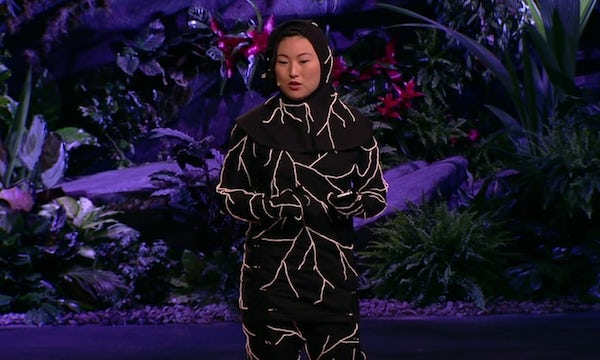
For people less concerned about the environment and more worried about the terrifying prospect of dying alone, there are now solutions (or at least partial ones). You can hire a death doula, a trained professional who will assist at the end of life in the same catch-all manner that birth doulas are there during labour. You can request a home funeral, in which your friends and family pay their respects to your corpse in the comfort of your living room, with every detail as carefully planned as a wedding. And before that day arrives, you can discuss the facts of death with like-minded souls at a Death Cafe, a meeting of the global movement started by Jon Underwood in 2011 (who died last summer of acute promyelocytic leukaemia) as a way for people to gather and reflect on mortality.
One of the people pioneering this new way of approaching death is Caitlin Doughty, a young, Los Angeles-based mortician who looks like a lost member of the Addams Family. She has written a bestselling memoir, hosts a YouTube series called Ask a Mortician and has founded a “death acceptance collective” called The Order of the Good Death, whose youthful members promote positive approaches to mortality.
“It’s OK to be openly interested in death practices,” Doughty told me while driving through LA one afternoon last autumn. “It makes you an engaged human who cares about all aspects of life. Ghettoising it as an interest particular to goths, weirdos or people obsessed with murder creates a dearth of honest conversation about death in the western world.”
This growing interest in alternative “death practices” began as a way to skirt the commercialism and uniformity of the funeral industry. And it appeals to a diverse set of people. “This desire for a pine box in the ground brings together hippies and libertarians, stay-off-my-land gun owners, certain religious people, Trump voters who don’t want big business ignoring what they want,” Doughty said. “They might not all have the same back-to-the-earth vision, but it’s the same fight for their fundamental rights. They don’t want a bland corporate infrastructure to dictate what happens to their mortal remains and what represents their life.”
Given that the idea of rethinking death connects with millions of people who are tired of the rampant commercialism and homogeneity of modern life, it was only a matter of time before commercial interests caught on. Just as the Danish concept of hygge was sold – in the form of scented candles and hand-knitted woollen socks – to consumers looking for comfort in troubled times, there is gold, too, in our obsession with a good death.
[P]ulishers, in particular, have latched on to the trend. Books about death are nothing new, of course, but the pace at which they’re arriving seems to have accelerated. Last year saw the arrival of a stack of literary memoirs about death by authors such as Edwidge Danticat and Robert McCrum. In his memoir, My Father’s Wake, the writer Kevin Toolis explains why the Irish get death right, while Caitlin Doughty’s new book, From Here to Eternity: Travelling the World to Find the Good Death, explores the way cultures across the world, from Indonesia to Bolivia to Japan, approach death.
But perhaps it is not the Irish or the Bolivians who have perfected the art of dying well, but the Swedish. In recent months, thanks to a publisher-led media campaign, you may have come across the concept of döstädning, the Swedish practice of “death cleaning”. Death cleaning applies a simple formula to the process of dealing with our possessions before we die. In Marie Kondo’s The Life-Changing Magic of Tidying, a bestselling guide to tidying up your home, and thus your life, the essential question is whether a given object “sparks joy”. In death cleaning, it is “Will anyone I know be happier if I save this?”
It is easy to see the appeal. Death cleaning addresses many of the aspects of contemporary life that make us most anxious. For those who feel that they have accumulated too much stuff and that all this stuff is getting in the way of their spiritual development, it offers a practical guide to de-cluttering. For those who worry about their privacy or the prospect of relatives discovering their secrets, it offers sensible precautions. For those who fear a long, bewildered, incapacitated old age, it is a way of coping through clear-eyed preparation and understanding.
While Silicon Valley billionaires search for cures for death, the rest of us are just seeking ways of accepting death, ordering a long and messy old age and making peace with our relatives, who are already horrified at the idea of looking after us in our incontinent, incoherent dotage. The fact of living longer doesn’t just give us time to think about death, but also plunges us into chaos, sickness and confusion, and death cleaning seems a valiant attempt to counter this.
Death cleaning is a concept that has had passing mentions in Sweden, but it is not a well-known part of the national culture. In truth, it seems to be more talked about by foreigners who like to imagine Scandinavia as a place where people have life sorted out than it is by Swedes themselves. But even if Swedes rarely talk about döstädning, there is something authentic about the underlying philosophy. The Swedish ambassador to the US, Karin Olofsdotter, recently told the Washington Post that death cleaning is “almost like a biological thing to do”, the natural product of a society that prizes living independently, responsibly and thoughtfully, and whose homes reflect that ideal.
A friend of mine who works as a radio producer in Stockholm said: “My mother is döstädning incarnated. She has been in the mode of frenetic cleaning for couple of years now – she is 65 – [and thinks] throwing stuff out will make it easier for us children when she is no longer with us. She doesn’t want us to be left with difficult decisions about what to do with it and she doesn’t want personal stuff to get in the wrong hands. And ever since I was a teen she has forced me to get rid of stuff – my earliest paintings, old clothes, books I read as a child, memorabilia. Keeps telling me that it’s the best for everyone. I don’t know if it’s typically Swedish, but it is very, very rational and unsentimental.”
The well-funded Swedish welfare state enables elderly Swedes to live independently. “Perhaps this also adds to the sense that they feel they must get their things in order before they die, so that no one else should be responsible for it,” says Michael Booth, author of The Almost Nearly Perfect People, a cultural tour of Scandinavian countries. “Swedes are deeply, deeply responsible people. It is very important for a Swede to do things properly, not to be a burden on others, to take responsibility in this way. Swedes are very ‘proper’.”
According to Booth, the decluttering element of death cleaning “chimes with the general parsimony and minimalism of Lutheranism, which you find traces of throughout many aspects of Scandinavian culture. In Sweden especially, they value the ‘modern’ and ‘new’, and so, if you visit a council dump or recycling centre, you see some fairly eye-popping items discarded – stuff Brits would never throw away.”
Others are more sceptical about the notion that death cleaning is the product of a distinctly Swedish sensibility. “It sounds like a mind-body-spirit thing that could have come from anywhere,” says Robert Ferguson, author of Scandinavians: In Search of the Soul of the North, another book that tries to figure out the roots of our fascination with Scandinavia. “Actually I’m still waiting for the world to discover the joys of kalsarikänni, a Finnish word that means ‘drinking beer on your own at home in your underpants with no intention of going out’.”
[T]he book responsible for spreading the death-cleaning gospel is by Margareta Magnusson, a Swedish artist who describes herself as between “80 and 100”. The Gentle Art of Swedish Death Cleaning: How to Free Yourself and Your Family from a Lifetime of Clutter came out in English a few months ago. It is part practical guide to getting your affairs in order, part discourse on accepting the reality of death. Over the course of 38 very short chapters with titles such as If It Was Your Secret, Then Keep It That Way (or How to Death Clean Hidden, Dangerous and Secret Things), Magnusson sets out her pragmatic and upbeat approach to mortality. “Life will become more pleasant and comfortable if we get rid of some of the abundance,” she writes.
“The message was: we just have to accept that one day we will die,” said her literary agent, Susanna Lea. “Either our loved ones will begrudge us, or they will hold on to this wonderful memory and love us for sorting everything out. Which one do you want?”
As soon as Lea sent the book proposal out, publishers eagerly snapped it up. A German editor made an offer after just four hours. A couple of days later, it was sold to a publisher in Sweden, and then Lea took it to the 2016 Frankfurt book fair, the marketplace for international sales, and sold it to the UK, US and Australia. It is now being translated into 23 languages.
“Interestingly enough, the eastern Europeans have been the slowest to buy it,” said Lea. “They said: ‘We just don’t talk about death.’ I thought the Latin countries might not talk about death, but they completely got it.”
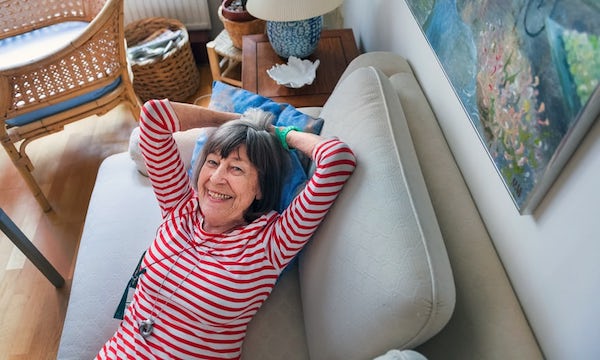
The title has been a challenge. Some countries balk at having death in the title of a book that is slim and small, and packaged like a gift book sold at check-out counters. Others struggle with translating the phrase itself. The Swedish just call their edition Döstädning (the subtitle translates as “not a sad story”). However, nettoyage de la mort does not work in French – they are going to call it instead La Vie en Ordre. The Germans get around it by giving it a title that translates as “Frau Magnusson’s Art of Putting Her Life in Order”.
As the book proposal appeared in the year that hygge and the decluttering guru Marie Kondo conquered the world, it’s not surprising that a book that could be pitched as “Marie Kondo does hygge” was a big hit with publishers. But Jamie Byng, head of Magnusson’s UK publisher, Canongate, strenuously rejects the comparison. “We were not looking for another Marie Kondo, fuck no,” he told me. “I was taken by the idea that this elderly Swedish lady had written a book about leaving this world gracefully and with as little mess as possible. There’s something of Swedish zen about it.”
Magnusson lives in an apartment in a large development in the Södermalm neighbourhood of Stockholm, not far from the upmarket raincoat brand Stutterheim (whose motto is “Swedish melancholy at its driest”), and shops that sell elegant, spare Scandinavian furniture. She’s tall and slender, wearing a striped French sailor-style shirt, faded jeans and trainers, with a grey bob and a long, oval-shaped face. Her most striking feature is her large, round, wet blue eyes. She looks healthy and spry and fashionable without trying hard, which fits the image of her as a mellow, slightly kooky but wise Scandinavian grandma who writes things such as: “Maybe Grandfather had ladies’ underwear in his drawer and maybe Grandma had a dildo in hers. But what does that matter now? They are no longer among us; if we liked them it really should be nothing for us to worry about.”
The first thing to note about Magnusson’s home is that it is not in any way minimalist. In her living room there are shelves of hundreds of books, and gentle abstract paintings by Magnusson herself on the walls. There are a surprising number of stuffed toys and masks from Asia (her late husband was Swedish but born in Japan, and the family lived in Singapore and Hong Kong as he moved frequently for work), presumably all of which have passed the making-people-happy test. The flat is packed with objects of sentimental value that have accrued around an elderly person who once lived in a larger home. It’s all cheerful and very, very neat.
Magnusson noted that Sweden used to be a country of big, quality companies that made things you might want to pass on to your children, or at least that lasted a very long time. “Swedish safety matches and Volvo – the safest car. Now, Sweden is just H&M and Ikea, stuff that doesn’t last more than five years if you’re lucky. It must have changed the culture in the country in a way, I think.”
She has a large collage of family photos hanging in her bedroom: a sister and brother, who are both dead, and her husband, who died in his mid-70s. Her book suggests that sorting through photographs is not the place to begin your death-cleaning process – too many memories to get swept up in, and too much sentiment. Better to start with the kitchen. But when it’s time to declutter your photos, she advises, be ruthless. One of her points is that if you don’t know the names of the people in a photo, feed them to a shredder.
Magnusson has a way, when talking about her life, to assume the mode of a literary narrator. Everything she says sounds like a first line to a self-consciously ruminative memoir. “I grew up in Gothenburg on Sweden’s west coast, and was born on New Year’s Eve,” she told me. “I think I was born in a happy way. It was happy, I don’t know. It started happy.”
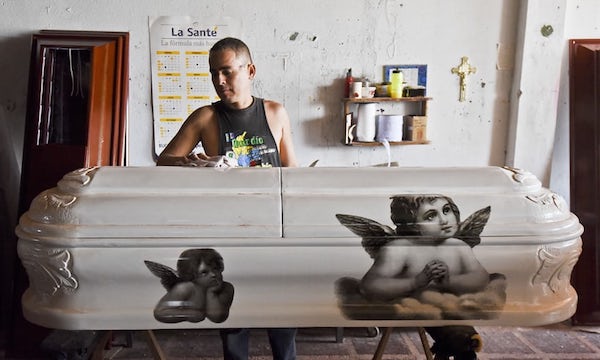
Her pragmatic nature is such that she seemed almost frustrated explaining simple ideas about death and decluttering to a non-Swede such as me. She plans to be cremated when she dies, which is common in Sweden, and for there to be a memorial plaque her family can visit. “I don’t believe in life after death. When I’m dead, I will be dead,” she said.
“To think that you cannot handle yourself, that you think you don’t know what’s going to happen – that must be terrible. I don’t have that fear. I almost died some years ago.” She had woken up in the middle of the night with some kind of heart trouble. “On the way to the hospital, I was just gone,” she said. “Then I really realised that I didn’t see any light in tunnels. I was so happy when I woke up, but I realised that nothing will happen.”
There’s a tipping point in your life, she said, when you start attending more funerals than weddings. “Maybe in the 50s or 60s it starts to happen: my parents, my mother-in-law, my husband and friends,” she said. By that point, Magnusson’s daughter Jane, who lives just across the road, had come over.
“We had a funeral on Friday. It was actually very pleasant,” said Jane.
“Yes, it was very nice. You meet a lot of friends that you had together,” said Magnusson.
“You get to have a good cry,” Jane said.
“Yeah, you have a good cry,” said Magnusson. “But you have also a good laugh.”
[S]wedish death cleaning has found a kind of American counterpart in the rise of a pair of young men from Ohio who call themselves the Minimalists. When one of the duo, Joshua Fields Millburn, lost his mother in 2009, he was left wondering what to do with everything she had amassed in her small apartment. In the end, he decided to donate it all to charity. It was something of an epiphany for Millburn, who began throwing out one thing he owned every day for a month. What would go on to become the foundational principle of his brand of minimalism dawned on him: “Our memories are not inside of things; they’re inside of us.” From that moment almost a decade ago, Millburn and his friend Ryan Nicodemus have built a Minimalist empire – books, podcasts, documentaries, speaking tours – based on the idea that accumulating stuff is simply what we do to distract ourselves from our real problems: lack of satisfaction with work, love, life and, ultimately a way to deny the inevitability of death.
Isn’t all decluttering about death? I asked Doughty, the mortician. “It is a little death to give away a keepsake or an item,” she agreed. “For most people to admit that they should be keeping track of stuff and getting rid of things is extremely threatening to their sense of self and idea as mortal.”
For many of us, the main way we try to look at death is by not looking at it. My own parents constantly talk about how they want their dead bodies to be dealt with – my mother has gone from wanting her cremains to be flushed down the toilet to wanting her corpse fed to dogs – and yet the elaborate plans for death are a way around dealing with it. My father won’t even write a will, instead preferring to phone me at odd hours from California to get me to make solemn promises that, after he is gone, I will do or will not do certain things (such as keeping his house in the family, or making sure to invite specific people to his funeral).
This highly developed awareness of their own mortality and careful consideration of how to dispose of their remains, combined with a total lack of planning for what happens in the weeks, months and years after the funeral, sometimes feels like my parents’ way of ensuring that their large personalities will gently haunt me from the afterlife. Or, to put it more politely, it seems like a way to guarantee their presence in my life as long as possible.
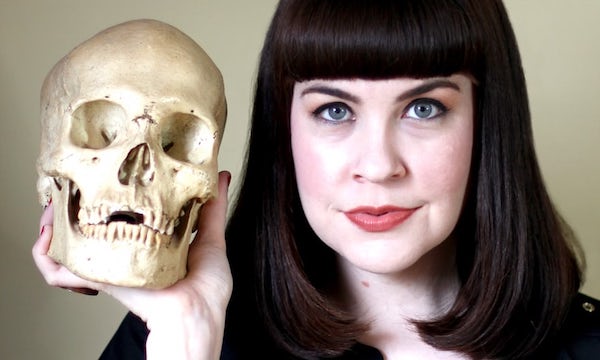
But I also sympathise with them. Both of my parents are 66, and will hopefully be around for some time. Dealing with one’s own legacy is a stark business. It involves accepting that you are the one who cares most – or perhaps the only person who cares at all – about your own legacy. At the same time, it means confronting hard questions about the people you will leave behind. Will your last gift to your loved ones be to leave them a few valuable possessions, or a photo album full of memories, or simply the great favour of not burdening them with having to sort through all the stuff you accumulated over your lifetime?
Doughty says that any parent who is “unwilling to have a basic conversation about death with your desperate kids – that’s a profound unkindness”. At 33, she has a will and a plan for what will happen to her business and the small cabin she owns when she dies. That has brought her comfort, she says. At 40, I don’t have any plans in place for my own death, unless you count drunkenly asking various friends to promise they would take my dog in the event that she becomes an orphan. Perhaps I am more like my parents than I would like to think.
Planning for death is hard, because it means that one must accept that you are the one who cares most, or at all, about your own legacy. To plan for death is to accept both ideas simultaneously. “There might be no one at your bedside. You might not be found for two days and eaten by cats. That’s all in the realm of possibility,” Doughty said. “But even surrounded by loved ones, you check out alone. This is your personal journey to go on.”
The idea of death as a solo journey is redolent of the language of wellness: the way people talk about getting into their fitness or diet or mindfulness routines. This new view of death borrows heavily from another trendy concept: self-care, the idea that looking after oneself is a political act, shoring yourself up to be able to keep fighting and facing the world. Self-care, too, has been co-opted to be about treating yourself to bath products, massages, face masks and yoga retreats – granting yourself an excuse to make it OK to buy stuff. The commercialisation of death is the inevitable sequel to the monetisation of every other part of life.
Death cleaning is possibly more potent than other wellbeing trends in that it taps into deep emotions: fear, guilt, regret. The death industry exploits people’s fears of inadequacy. You can’t just die – at the very least, you’ll need to invest in a house-tidying consultant, a death doula, an environmentally sound bespoke shroud, and a home funeral, to prove just how well you lived.
Complete Article ↪HERE↩!
Assisted dying in religious facilities means tough choices for families
Barry Hyman always swore he’d die peacefully on his own terms. But living in a faith-based nursing home put his family in a difficult position to help him
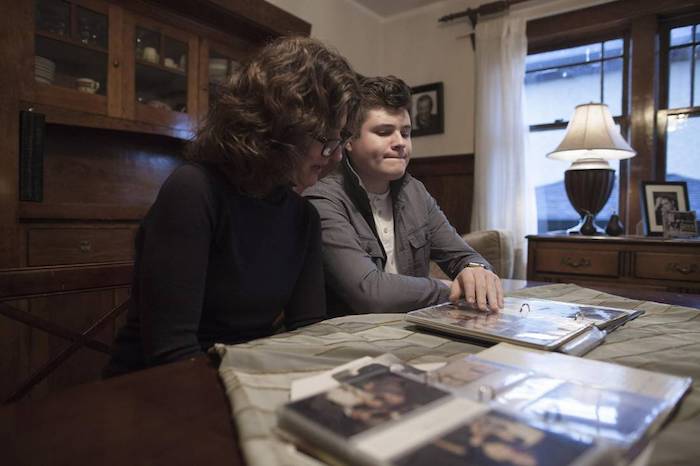
By Kelly Grant
[O]n the night that 83-year-old Barry Hyman was to receive a doctor-assisted death, his daughters were on edge, petrified that at any moment someone would burst through the door and stop them from granting their father his final wish.
Enfeebled by a stroke and diagnosed with lung cancer, Mr. Hyman had asked to die at home.
But his home at the time was a publicly funded Jewish nursing home in Vancouver whose board forbade assisted deaths on site, saying the newly legal practice violated the values and traditions of the Jewish faith.
That left Lola Hyman, the younger of Mr. Hyman’s two daughters and his main caregiver, with a choice.
She could transfer her father to an unfamiliar clinic to die, or she could sneak Ellen Wiebe, one of the country’s leading doctor-advocates of assisted dying, into her father’s room to help him die in his own bed.
Lola and the rest of her immediate family settled on the latter. They would deal with the fallout later.
Their first priority was making sure that Mr. Hyman died peacefully on his own terms, as he’d always sworn he would.
“The room was very quiet. We just held his hand and stared at him,” Lola said. “My sister was sobbing, just sobbing. I was a stone. A complete stone. My heart was racing that someone would open the door.”
nstead of focusing on their goodbyes, the Hyman family spent the last moments of Barry’s life worrying that they would be discovered and prevented from completing a legal medical procedure inside a publicly funded care facility.
Their story is an extreme example of the choices that grievously ill Canadians still face – 18 months after Ottawa’s assisted-dying law took effect – if they wind up near the end of their lives in a hospital or nursing home that refuses to allow assisted dying, either for religious reasons, or because the facility has simply decided to say no.
It is not clear if these institutions enjoy the same Charter-protected religious freedoms as individuals when it comes to refusing assisted deaths because the issue has not yet been tested in court.
In the vast majority of cases, such patients are transferred to another facility to die. But it isn’t always easy to find a place to send them.
Sometimes overcrowded secular hospitals say no. Sometimes the only hospital or nursing home in town is faith-based.
Other times, an unconventional location has to suffice: In Vancouver, Dr. Wiebe has opened her women’s health clinic after-hours for 34 assisted deaths, which means that in some cases, Catholic health-care facilities have transferred patients to an abortion clinic to die.
Canada’s religious health-care organizations, which have been tending to the sick in this country since long before Medicare, say they are doing their best to support terminally ill patients without betraying their own faith, offering options like palliative sedation to make patients’ natural deaths as painless as possible.
Some have softened their objections to the early parts of the medical-aid-in-dying process, allowing outside doctors to come in and conduct eligibility assessments on patients who are too fragile to be transferred for an appointment.
But when it comes to actual physician-assisted deaths, religious facilities – be they Jewish, Baptist, Catholic or otherwise – are refusing to allow the practice on their grounds.
“The core issue … is that Catholic and faith-based organizations are committed to the inherent dignity of every human life and would never intentionally hasten the end of a life,” said Christopher De Bono, vice-president of mission, ethics, spirituality and indigenous wellness at Providence Health Care, a Catholic health-care network that includes St. Paul’s Hospital in downtown Vancouver.
Nobody on either side of Canada’s assisted-dying divide is arguing that individual doctors or nurses should have to participate in assisted dying if they object to it, said Shanaaz Gokool, the chief executive officer of the advocacy group Dying with Dignity Canada.
But she is incensed that every province with faith-based health-care organizations except Quebec has allowed taxpayer-funded hospitals and nursing homes to refuse requests for a procedure the Supreme Court of Canada has declared a Charter-protected right. (And even Quebec allows some hospices to opt out.)
“Why are we making this so hard for people when it’s the one medical treatment that you have a legal right to in this country?” she said.
Throughout Barry Hyman’s long and colourful life – through founding a small publishing company, raising two daughters, divorcing twice, studying history and English literature at Simon Fraser University as a senior citizen and logging countless hours at casino poker tables – he told anyone who would listen that he had no desire to linger if his health failed.
“Ever since I can remember, and I mean over 50 years, my father has always told me that if he ever got to the point that he no longer had the ability to comprehend, the ability to socialize, the ability to do the things that he wanted to do … he was done,” said Leah Hyman, 54, Mr. Hyman’s eldest daughter.
Mr. Hyman, a Winnipeg-born businessman, dreaded one day losing the vitality that infused his life, first as a young waiter on the railroad, then as the founder of an Edmonton printing company that churned out small Jewish newspapers and government directories.
He also owned pool halls, nightclubs and a roller rink. He was still on J-date, the online Jewish matchmaking service, in his 80s.
“He just rolled up his sleeves and dove into everything,” Lola said – including introducing his only grandson, Jackson Doyle-Hyman, now 19, to the worlds of business and (responsible) gambling.
Mr. Hyman once took a kindergarten-aged Jackson to the track and showed him how to bet $10 at a time on the top horses.
Lola, now 51, later found cash spilling out of the pockets of Jackson’s little navy polo jacket.
As he grew older, Jackson often tagged along to business meetings where ad space was traded for car parts or hotel stays, a practice called “contra.”
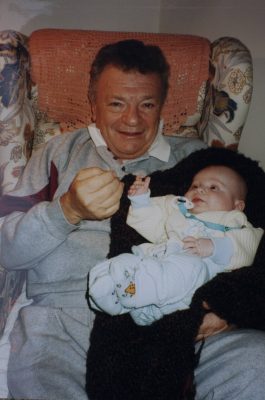
“We always joked that he could have built a Ferrari with all the car parts he got contra for,” Jackson said.
Mr. Hyman was already a diabetic with congestive heart failure when he was diagnosed with lung cancer early in 2016.
But his health didn’t really begin to deteriorate until an ill-fated trip to a tanning salon to treat his psoriasis.
The tanning bed left Mr. Hyman with a burn on his left foot no bigger than a quarter. The wound festered for nearly a year, despite every effort to heal it.
By October of 2016, doctors were talking about amputating his leg. Mr. Hyman instead chose to undergo a procedure in which surgeons bypassed a clogged leg artery that was keeping his foot from healing.
Ten days later he had a stroke, a known risk of the operation.
His mind was still sharp, but the stroke impaired his speech – a devastating blow for a man who adored the English language and insisted upon its correct use.
“This was a guy who read two papers a day and did the New York Times crossword,” Lola said, “And he no longer could do any of that.”
It was clear to Lola that her father could not keep living in his own apartment, as he had before the stroke.
The family’s first choice was the Louis Brier Home and Hospital, Vancouver’s only Jewish nursing home. But it was full.
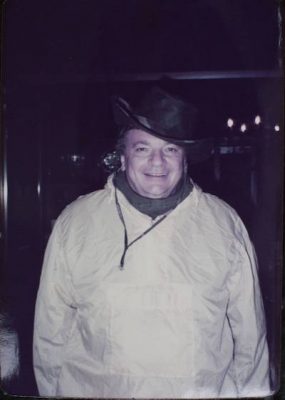
Reluctantly, Mr. Hyman accepted a spot at St. Vincent’s: Brock Fahrni, a Catholic home where he shared a room with three other men.
Mr. Hyman and his family made a preliminary inquiry about assisted death with a doctor there, but it went nowhere.
When, in April of 2017, a bed in a private room became available at the Louis Brier Home, Lola leaped at the chance.
She knew that, like the Catholic home her father would be leaving, the Louis Brier did not permit assisted deaths on site.
She hoped that moving her father to a nicer place where he could live among his Jewish peers and Jewish culture would persuade him to abandon his talk of assisted death.
But Mr. Hyman wouldn’t let go of the idea. Although Lola didn’t want to lose her father, she was willing to help him fulfill his final wish.
On April 26, a week after moving to the Louis Brier, Mr. Hyman and Lola met Dr. Wiebe at her office.
A few hours later, Dr. Wiebe e-mailed Lola to say her father’s constellation of health problems made him eligible for an assisted death.
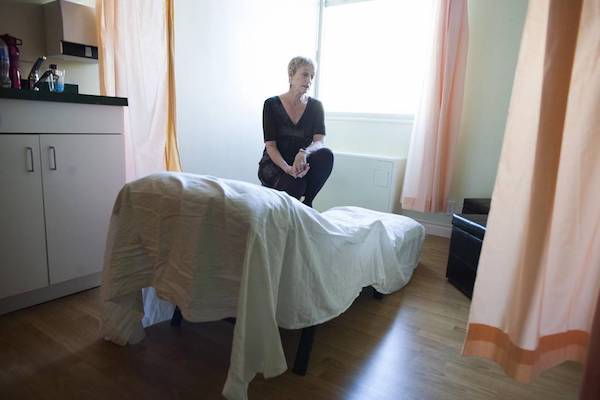
When the Supreme Court of Canada struck down the Criminal Code prohibition on physician-assisted dying in February of 2015, the judgment made it clear that invalidating the law would not compel doctors to help their patients die.
The court was silent, however, on whether entire health-care organizations could bow out of medical aid in dying.
Parliament passed a law that was silent on the question, too, even though a special joint committee of the House and Senate had recommended that Ottawa work with the provinces to ensure all publicly funded health-care facilities provide medical assistance in dying.
Jay Aubrey, a lawyer with the British Columbia Civil Liberties Association, the group that helped topple the ban on assisted dying, predicted that a legal challenge against an objecting religious health-care facility such as the Louis Brier Home would be straightforward.
The home is 67-per-cent publicly funded and is therefore “acting in the shoes of government,” she said. “That’s why they’re bound by the Constitution.”
Ms. Aubrey sent a letter to the Louis Brier Home last May making that case on Mr. Hyman’s behalf.
But Richard Moon, a University of Windsor law professor and an expert in religious-freedom cases, said past precedents suggest public funding alone is not enough to saddle a third-party like a nursing-home operator with the constitutional duties of a government.
On the contrary, he said, religious health-care organizations could try – and might succeed, under the right circumstances – to claim they are entitled to the same Charter-protected religious freedoms as individuals, allowing them to rebuff government orders that breach their beliefs.
Prof. Moon said there could be a simple way around that: Provincial governments could withhold funding from health-care organizations that do not allow assisted dying, so long as they applied the rule without discrimination.
“It’s a matter of nerve here, isn’t it?” he said. “Is the government really willing to withdraw funding from these organizations? Are these organizations really willing to risk the loss of funding?”
So far, everywhere outside Quebec, the answer is no.
Grievously ill patients are instead being transferred out of non-participating institutions in numbers that are difficult to determine at a national level.
British Columbia’s five regional health authorities together logged a total of 61 transfers as of the beginning of December. Alberta has recorded 42; Saskatchewan is aware of at least 11; Manitoba has recorded eight.
The Maritime provinces say they are either not aware of any such transfers or are not tracking them.
The outlier is Ontario. Not only has Kathleen Wynne’s government declined to track transfers, it passed a law exempting hospitals, nursing homes and hospices from freedom-of-information requests about medical aid in dying, a move the province’s privacy commissioner denounced.
The blackout, which a spokesman for Ontario’s Ministry of Health and Long-Term Care said was enacted to protect health-care workers and institutions that provide assisted dying, makes it impossible to say how many hospitals in Canada’s most populous province are refusing to allow the practice.
But ministry officials have hazarded a guess: As many as 27 publicly funded Ontario hospitals – one out of every five in the province – would “potentially object to [medical aid in dying] based on their stated religious/ideological values,” according to an internal briefing note that Dying with Dignity obtained through a freedom-of-information request.
“There are 7 cities/towns in Ontario with potentially objecting hospitals that have no alternative hospitals within 100 km. Moreover, there are 4 other cities/towns with only one neutral hospital for the whole region.”
In Vancouver, when patients are looking for an alternative location to receive an assisted death, one option is Dr. Wiebe’s Willow Women’s Clinic on the 10th floor of a downtown high-rise.
The space has much to recommend it, according to Dr. Wiebe: wheelchair access, a separate waiting room for family and, in the larger of the two rooms she reconfigures for assisted deaths, a spectacular view of the mountains.
Still, there’s a makeshift feel to the arrangement. Patients take their last breaths on a bedsheet-draped patio recliner, the same piece of furniture on which the clinic’s regular clients recover after having an intrauterine device inserted.
In one “dreadful” case, a man who wanted to die without his family present was transferred from a Catholic facility and mistakenly left outside by a medical transportation service, next to the pounding of jackhammers, Dr. Wiebe said.
“We need to get to [the government] and say, ‘This is completely unreasonable – you can change it with the stroke of a pen,'” Dr. Wiebe said of the B.C. NDP’s decision to continue allowing publicly funded faith-based institutions to opt out of assisted dying.
B.C. Health Minister Adrian Dix declined an interview request for this story.
A spokeswoman for the Ministry of Health emphasized that all of the regional health authorities in B.C. have care co-ordination services that help smooth the transition for patients who have to move from one place to another for an assisted death.
She said the provincial government has “no plans to terminate” a long-standing agreement that allows members of a group called the Denominational Health Association (DHA) to refuse to provide services that are inconsistent with their religious values.
The DHA represents 44 health-care facilities in B.C., including the Louis Brier Home, where Barry Hyman wanted to die.

The entrance to the Jewish faith-based Louis Brier Home and Hospital in Vancouver.
A few weeks after meeting Dr. Wiebe, Lola Hyman e-mailed David Keselman, the chief executive officer of the Louis Brier Home, to formally ask that her father be allowed to die on site, despite the home’s policy.
Mr. Keselman sent his formal reply to Lola on May 25. “Quite some time ago,” he wrote, “the governing board, along with the leadership of Louis Brier, decided that Louis Brier will provide care and services to the residents according to the Orthodox Jewish stream.”
The home was willing to allow eligibility assessments, he continued, but not assisted death itself.
“Lola I realize that this may not be what you would have liked or have wanted to hear,” Mr. Keselman wrote. “If so I regret this.”
For weeks afterward, Lola weighed her options. She didn’t like the idea of sending her father to die at Dr. Wiebe’s office or an unfamiliar seniors’ home suggested by the care co-ordination service at Vancouver Coastal Health.
“The thought of doing my father’s provision in a clinical setting [with a bed] that looked like a dentist’s chair was so unsettling for me,” she said. “I didn’t share it with my father. I did not burden him with any of the logistics. I just said, ‘When you want it to happen, Dad, it will happen.'”
Mr. Hyman ultimately decided to die on June 29.
Leah and her wife, Tori, drove up from their home in Oregon that day to be with Lola and Jackson in Mr. Hyman’s room.
Early in the evening, Lola went to the front door of the nursing home to welcome Dr. Wiebe and a nurse as though they were old friends paying a visit.
They hid their medical equipment and lethal drugs in oversized bags.
Dr. Wiebe, her nurse and Lola went in to Mr. Hyman’s room and shut the door. Leah, Tori and Jackson stood guard outside.
When a nurse from the home came by to try to give Mr. Hyman his regular medications, Leah offered to deliver the pills, shooing the nurse away with a forced joke or two as though she were not minutes away from watching her father die.
“It was rough,” she recalled, crying. “I was not the best daughter. We just didn’t communicate well. We loved each other and we knew each other and we were there for each other. But this was the one thing I was going to make sure that we did, that we followed through on. He was going to go the way that he wanted to go.”
When Dr. Wiebe was ready to begin injecting the medications, Leah, Tori and Jackson came in and joined Lola at Mr. Hyman’s bedside.
He died peacefully in about 10 minutes that felt much longer to his family. “I’ll never forget looking at the door all the time,” Leah said, “terrified that someone was going to come in.”
In the end, nobody interrupted Mr. Hyman’s death. Dr. Wiebe filled out the death certificate, gave it to Lola, and left.
About 20 minutes later, Lola approached the home’s nursing station and did something she instantly regretted: She told them her father had died, but didn’t say how.
“I was frozen,” she said. “If I could go back, I would have walked up to that nursing station and said, ‘Dad passed of [medical aid in dying],’ but I can’t imagine what I would have been bombarded with as Dr. Wiebe was getting into her car.”
The next morning, after Dr. Wiebe reported the details of the case to Vancouver Coastal Health, Lola sent the Louis Brier Home a copy of Mr. Hyman’s death certificate.
The aftermath of Mr. Hyman’s death was hard on the home’s staff, especially the front-line workers who were initially puzzled by his unexpected death, Mr. Keselman said.
“We had no opportunity to communicate with the staff, to prepare them, to explain anything,” he said. “It was very traumatic.”
Mark Rozenberg, the chair of the ethics committee of Louis Brier’s board, emphasized that the home makes no secret of its opposition to assisted dying.
“Anyone who comes here knows what our policy is,” he said. “And if they don’t like the policy, they should go somewhere else.”
The home has since filed a formal complaint against Dr. Wiebe with the College of Physicians and Surgeons of British Columbia, the regulator for doctors in the province.
The complaint does not faze Dr. Wiebe; she is confident the college will see she was fulfilling her patient’s wish to die at home. (A college spokeswoman declined to comment.)
But Lola is heartsick at the thought of Dr. Wiebe in trouble, just as she is heartsick about having upset the front-line staff at Louis Brier.
None of this – including the stress her family experienced on the evening of Mr. Hyman’s death – would have happened if the government compelled all publicly funded health-care facilities to allow assisted dying, Lola said.
“Everyone is entitled to their religious beliefs and traditions and customs,” she said. “But when it comes to somebody who is very sick and dying, we need to have a different approach.”
Complete Article ↪HERE↩!
A time to die? Why I believe in the right to choose
It’s the beginning of a new year and the script is that we talk about hope. It was a challenging 2017 but things will be OK. New opportunities, fresh blessings, more love and more joy.
So why am I wanting to talk about death? Well, it’s personal and also professional.
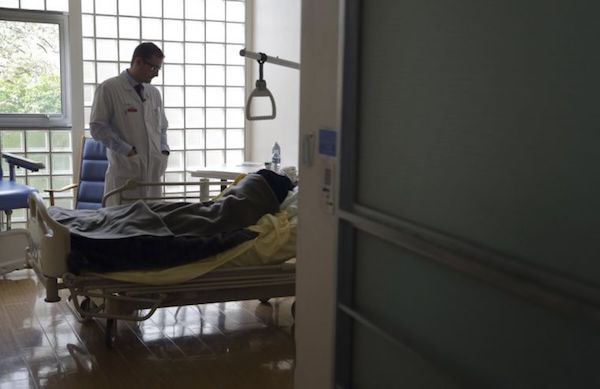
By Rosie Harper
[I]t’s personal because I have just booked flights back to Switzerland to go to the funeral of my much loved uncle Albin. He died two days before Christmas, aged 82, gently and peacefully with his family around him. About six years ago his younger brother Otto also died peacefully with his family around him. The difference was that Albin died of old age and dementia, Otto died of a nasty aggressive brain tumour. Albin died ‘naturally’. Otto, being Swiss, was able to request and receive the help he needed to die in a dignified and pain-free peaceful way. This merciful intervention in no way changed the fact of his death, and even now the sorrow is hard to bear, but it did cut short the last bitter agonies of the manner of his dying.
It is professional because in the parish where I work there are a lot of funerals. Mostly the bereaved tell me of the immense kindness of all around; family and friends, doctors and nurses. They tell of the shock of sudden unexpected death and also the oblique conversations about the use of morphine. They also sometimes tell me of bad deaths. Deaths where there is no way of giving the dying person their final wish: ‘Please, dear God, please help me to die.’
Don’t tell me that the time of someone’s death is purely God’s business. That at the moment when all a human soul wants is for it to end, God stands at the end of the bed and says: ‘No my child, it is my will that you suffer just a few more days.’
That is pure fatalism and superstition. Even people who would use language such as ‘God has a plan for your life’ don’t actually mean that everything that happens to them from birth to death is controlled. Of course not. We rejoice in our free will, even in the knowledge that we risk misusing it. That’s part of the deal. Our conception is a risk. We may be born to loving parents, or our mother might have been kidnapped and raped. The will of God? Throughout our lives we make choices and many of them are life and death choices. To smoke or drink or over-eat. To enjoy extreme sports, to ride a motorbike. For all those things we choose and we also take responsibility.
When our lives are nearing the end there are now many societies where that degree of both choice and responsibility remains. That is not the case in the UK.
Just when you might think we need our freedom the most, the medical profession, by law, takes it away from us. Just when you might think that God would most honour the freedom he has given us, the Christian community takes it away from us.
I’m with Hans Küng. If the time comes, and it is necessary for me, I would find it a fulfilment of my life of faith to be able to say to God: ‘Loving Father, I thank you for the most wonderful gift of life. The burden of it is now too much for me to bear and so with every ounce of love and gratitude I can muster I give it back to you.’
Complete Article ↪HERE↩!


